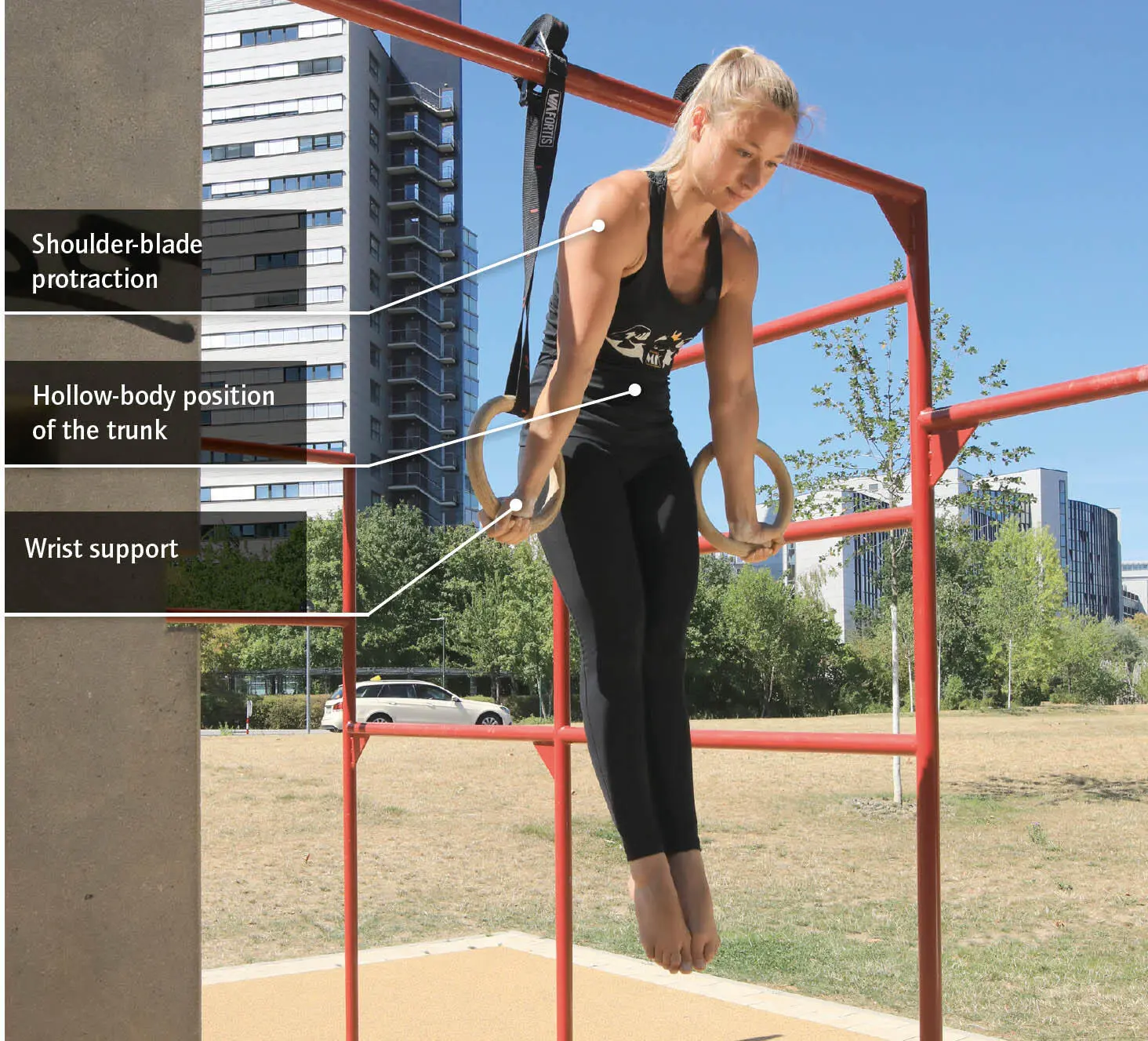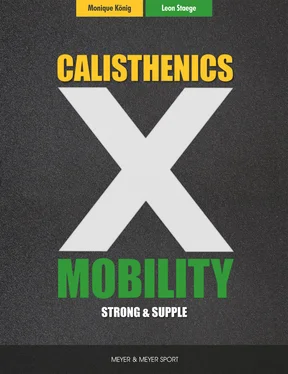This means your muscles no longer resist this joint position–resolving what we know as tight muscles. The more you practice this joint position, the better your body is able to release this muscle length faster and with more strength. You’ll become stronger at this range of motion and able to move without restrictions.
Muscles are always given obtuse orders on how to behave. But if you want to achieve long-term changes, you must talk to the messengers (joints) and the commander (brain). If you focus only on your muscles during mobility training, meaning you only try to passively lengthen (stretch) your muscles, the communication between messengers and commander is insufficient. After all, your brain wants specific information about what needs to be done.
In physical therapy, we always talk about how training should be movement specific. This is true for strength training as well as mobility training. Regardless of which sport you’re preparing for with mobility training or wanting to improve your performance of through better mobility, one thing is certain: strength is always a factor, even if it’s gravity that makes it necessary for you to become strong in your mobility.
Lengthening your muscles will, at best, have a very short-term effect that won’t be optimally wired in your nervous system. Always think about the input your brain receives, processes, and subsequently creates as output. When your input (e.g., stretches that were held too long) doesn’t match the requested output (e.g., a pull-up) you won’t benefit from the briefly acquired range of motion.
Lots of yogis have participated in our past Calisthenics X Mobility workshops. Most of them were a bit surprised when I insisted that passive stretching is a waste of time when you’re trying to become more mobile. Most of them reported that their usually statically held positions had resulted in increased range of motion.
The explanation is simple: if you practice something often, you’ll get better.
For instance, if I practice doing the splits often and long enough, I’ll, at some point, master them. Remember, communication with the brain is the decisive factor for long-term adaptations.
Passive stretching and static yoga poses don’t provide nearly as much information for the brain as movement does.
When you’re moving, you have to concentrate more, the impact on your vestibular system is significantly higher, and your mechanoreceptors(sensory receptors in joints, muscles, tendons, ligaments, and the skin that perceive mechanical loading) receive more input.
These and other factors result in the body adapting more quickly to a certain movement or range of motion. But don’t get me wrong, I’m not opposed to yoga. This is purely about the differentiation between passive and active flexibility. There are many other reasons why people do yoga, but, in general, I find that yoga doesn’t make us as efficiently mobile as structured mobility training does.
Stretching results in inadequate activation of the nervous system and provides to the brain insufficient information about the safety of the movement.
2.5 WHY FOAM ROLLERS WON’T MAKE YOU MORE MOBILE
Let’s move on to another topic that’s similar to stretching. Ever since the Becoming a Supple Leopard hype, foam rollers and trigger balls have been very popular. They’re considered basic equipment in the mobility area of nearly every fitness facility.
I continue to announce on my social-media channels that I’m not at all a supporter of the foam roller.
Following is an explanation of the following:
• Why you don’t need to roll around for hours
• How you can use a foam roller
• Why pain during rolling isn’t desirable
2.5.1 THE FOAM-ROLLER PHENOMENON
When the subject of “fascia fitness” first emerged, everyone packed a foam roller under his gluteus maximus and rolled like there was no tomorrow to release the “adhesions.”
Before I enter into this discussion, I must tell you that while the fascia trend has resulted in more people engaging in mobility training, in the area of fitness, some bad habits have crept in. I’d like to comment on these because they’ll keep you from doing a clean pull-up and a perfect handstand.
2.5.2 ROLLING, ROLLING, ROLLING
At the fitness studio, I continue to see one unfortunate phenomenon over and over again.
Most people’s warm-up looks like this: roll, roll, and roll some more. I think it’s great that because of the foam roller many are even thinking about warming up and not going straight to the pull-up bar. But the resulting problem is obvious. You might manage to increase your range of motion by rolling, but you’ve likely never before properly trained that range of motion. Your nervous system is unable to control that new range.
Remember, the purpose of training is to improve your quality of movement. But when your training preparation takes place strictly on the roller, you don’t practice any movements that would be conducive to your training, like activating the shoulder blades before calisthenics training. Thirty minutes with the foam roller isn’t an adequate warmup for training.
2.5.3 SURFACE SENSIBILITY VERSUS PROPRIOCEPTIVE SENSIBILITY
When Monique warms up for calisthenics training, she warms up the areas that are critical to her subsequent training. She focuses on preparing mobility-technical movement patterns.

Before her specific warm-up, this allows her to better draw on her movement repertoire during training, because she’s practiced her proprioceptive sensibilitywith mobility training.
If she were to spend time only on a foam roller, she’d merely stimulate her surface sensibility (exteroception),which could briefly provide her with an increased range of motion, but she wouldn’t practice her movement awareness to the same extent she would by moving.
Each body is unique. The way each one will react to stimulation of its receptors is also unique. The entire debate about needing to work our fascia separately is absolutely moving in the wrong direction. After all, we’re always affecting multiple body structures simultaneously by moving, as well as rolling on a foam roller. Affecting only one structure (fascia) is simply not possible.
Thus, I continue to ask myself this question: How can I effectively use my training time to optimize my athletic performance or that of my clients? For instance, when I’m coaching, I try out different methods to help clients move better. Movement is always the central issue when it comes to being pain-free, feeling better in one’s body, and being able to perform better during training.
When you focus on practicing your movements, on better activating your joints, and on getting stronger with a big range of motion, you’ll achieve 80 percent of the results with only 20 percent of the effort.
You should figure out if the foam roller even works for you. Just because it’s generally supposed to be good doesn’t mean it’s good for you.
Keep in mind the SAID principle(specific adaptation on imposed demands). In other words, you always adapt to the stimulus you apply to your body. Passive rolling alone won’t make you better.
For most people, rolling involves pain–only when you’re in a lot of pain and can’t move your shoulder for three days does rolling work. This is also true for a lot of athletes and stretching, who think, I have to lengthen the muscle as much as possible, and it has to hurt!
Читать дальше













